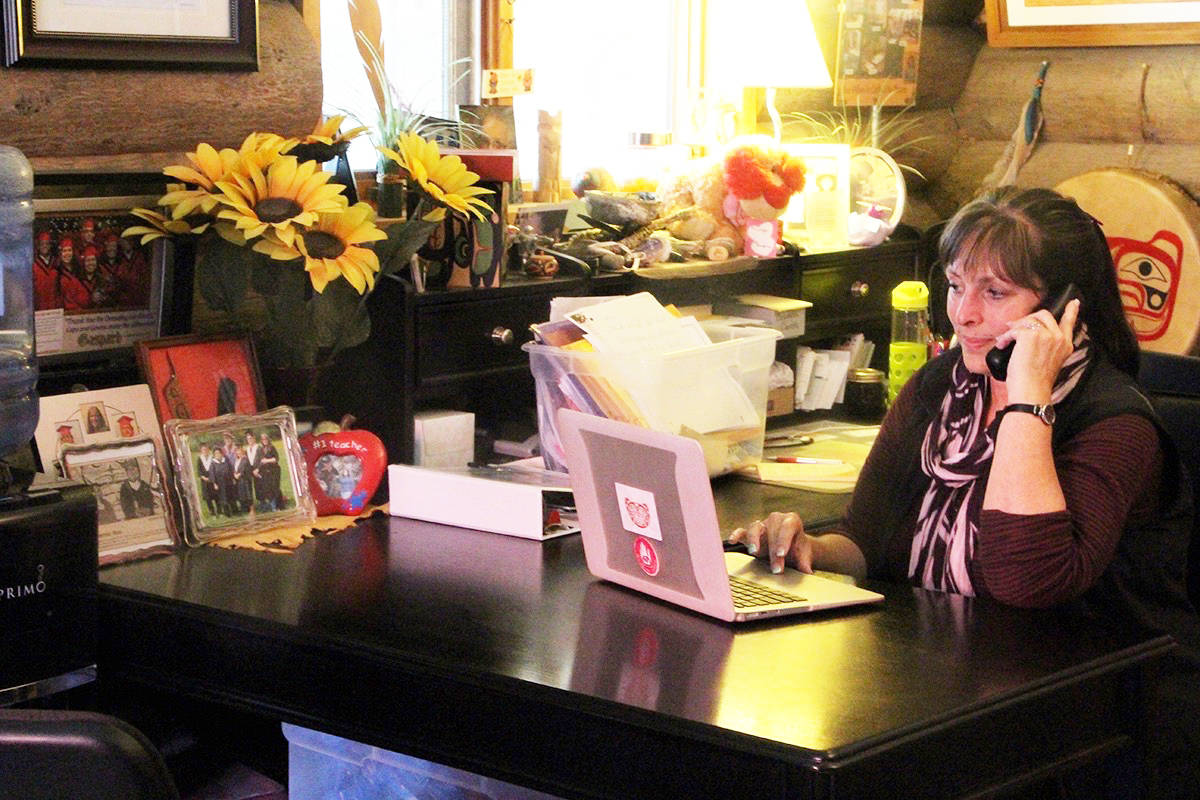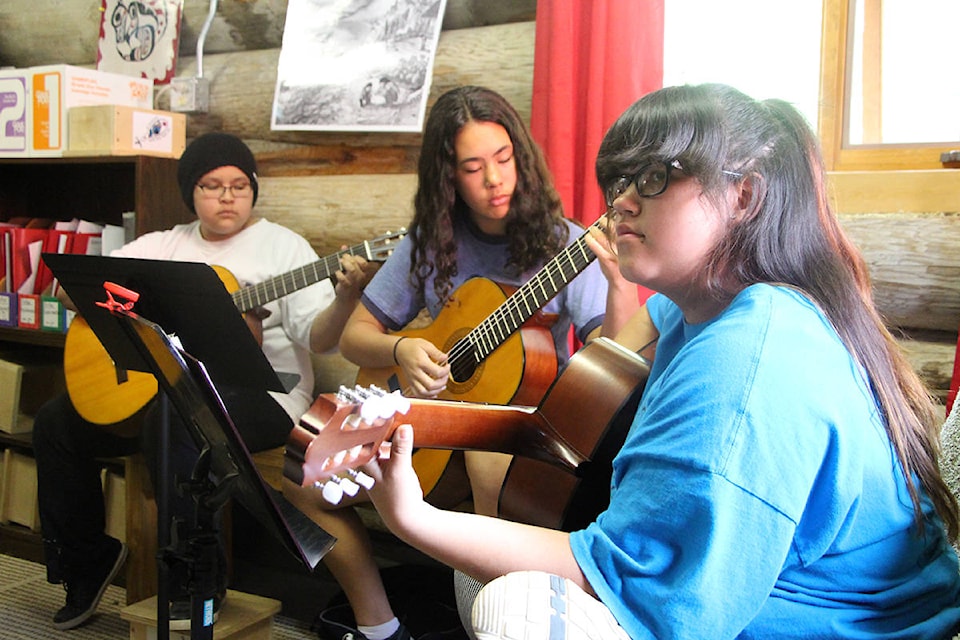YOU might think ‘Na Aksa Gyilak’yoo School in Kitsumkalum, five kilometres west of Terrace, is full of celebrities.
During the last week of June, a crew from Montreal spent two days there filming the show Raven’s Quest. A Grade 4 student, Drakon Wesley-Wick, hosted the show with the help of his Grade 6 friend JD Alexander.
And last year, a split Grade 7, 8 &9 class was in front of – and behind – the lens. With the help of N’we Jinan, a program aimed at helping students express themselves creatively, the class wrote and sang “The Highway” song and created a music video to go with it. The song is about the missing and murdered women along Highway 16 and the video was filmed locally. As part of the project, the students promoted it to the media.
The school’s principal Colleen Austin remembers one radio interview specifically. “They were telling [the host] how much they enjoyed the process of the project. What they hoped for was that more students would have the opportunity to learn like this.”
The ‘Na Aksa Gyilak’yoo School is an independent First Nations school. It’s part of the Ministry of Education as well as certified by the First Nations Schools Association of BC (FNSABC), which sets the standards for teaching indigenous culture and language.
It’s not full of celebrities, rather kindergarten to Grade 12 students, and 21 passionate staff members.
It started as an adult school in 2005 under the direction of Charlotte Guno, the Kitsumkalum education administrator at the time. The goal was to help adults who didn’t finish high school complete their Grade 12 Dogwood requirements.
Austin got involved right away.
“You know, you take a look at your strengths and interests and it seemed like a perfect fit for me,” she says. “I was really keen to incorporate the First Nations culture into the course work and the methods of teaching.”
“In six years, we graduated 28 adults with Dogwoods,” she adds.
With all the adults graduated, the school turned its attention to teaching the local youth.
The school aims to address the cultural and language needs of students as well as academics.
“We are the only school that provides a full language and culture program from kindergarten to Grade 12,” says Austin.
‘Na Aksa Gyilak’yoo currently has four mixed classes: kindergarten to Grade 3, Grade 4 to 6, Grade 7 to 9, and Grade 10 to 12. Each class has at least one teacher and one education assistant.
Austin herself is possibly the only certified teacher of the Tsimshian language, Sm’algyax, in the area.
Recently she’s also become the president of the FNSABC, which includes 137 schools across the province. In the position, she has access to data about all the schools.
“What I’ve noticed is that our school has the highest growth in reading and math of all the First Nations schools in BC,” she says.
“There are a number of students that come to us at a lower grade level for reading and math,” she says. But the school has a “pacing” system of learning where students can catch up quite quickly, and others can excel.
“The way we do that is a combination of in-class, direct instruction and practice. And every day we send home packages that parents work on with their children.”
“Parents of students who go here are extremely involved in all aspects of the child’s education,” she says.
In 2015, the school had 48 students. In September, they are expecting 64.
“Last year we had a huge spike because a whole bunch of siblings wanted to come here,” says Austin.
As for the videos and similar creative student projects, Austin says, “everything we do is curriculum driven.”
“We talk about what kind of projects we can do to achieve the learning outcomes expected,” she says, adding that most projects are student-driven. “It’s a lot of work but it’s getting a little easier because there are more of us educators who understand it better.”
The Highway music video project, for example, incorporated English language arts, media arts, and some math through budgeting.
“What was impressive is that they gained so much confidence that they were able to articulate their learning to the public in huge groups. They performed that song in front of 650 people in Vancouver at the first nations school association conference,” she says.
“I get emails or phone calls regularly from people asking if they can do a project here,” says Austin.
Austin listed three main goals for the school’s future.
First, more project-based learning tied to different parts of the curriculum.
Second, the school wants to build a new facility where it can house all of its students under one roof.
The classes are currently housed in a combination of four buildings and portables.
A new facility will require a lot of money and organization, says Austin, as well as significant consultation with the Kitsumkalum community.
The third goal is to create a Sm’algyax immersion program. The plan is to start with the kindergarten to Grade 3 class and grow from there.
“It takes a lot of people with a lot of passion to accomplish the vision,” says Austin.
She adds, “I’m hoping that what we are doing will be something that people will envision for their own schools and their own programs.”

